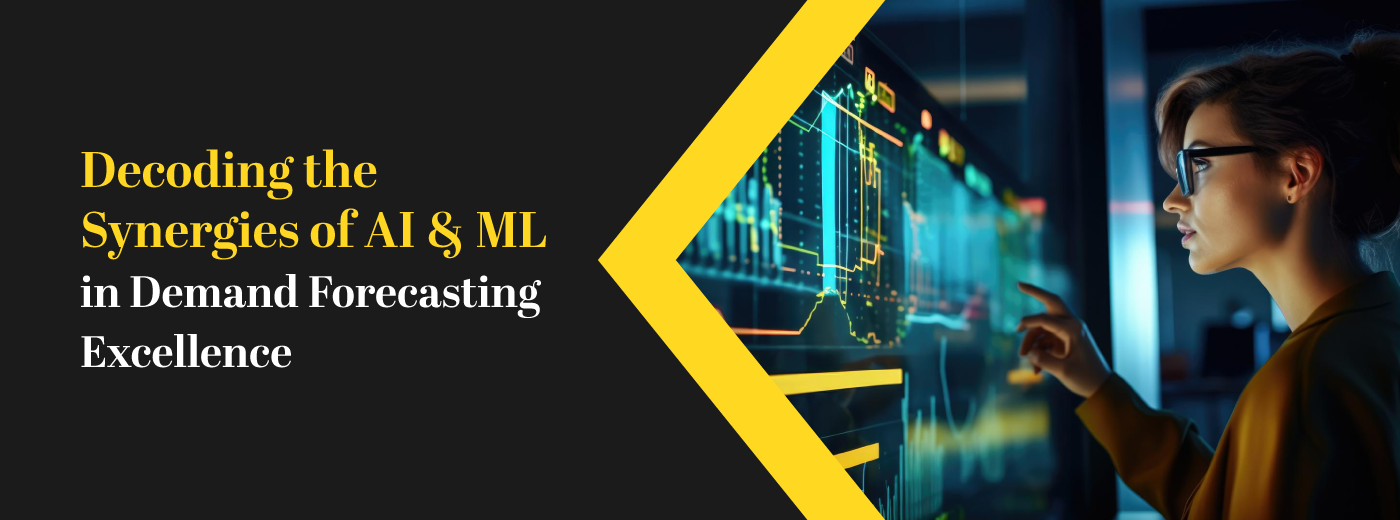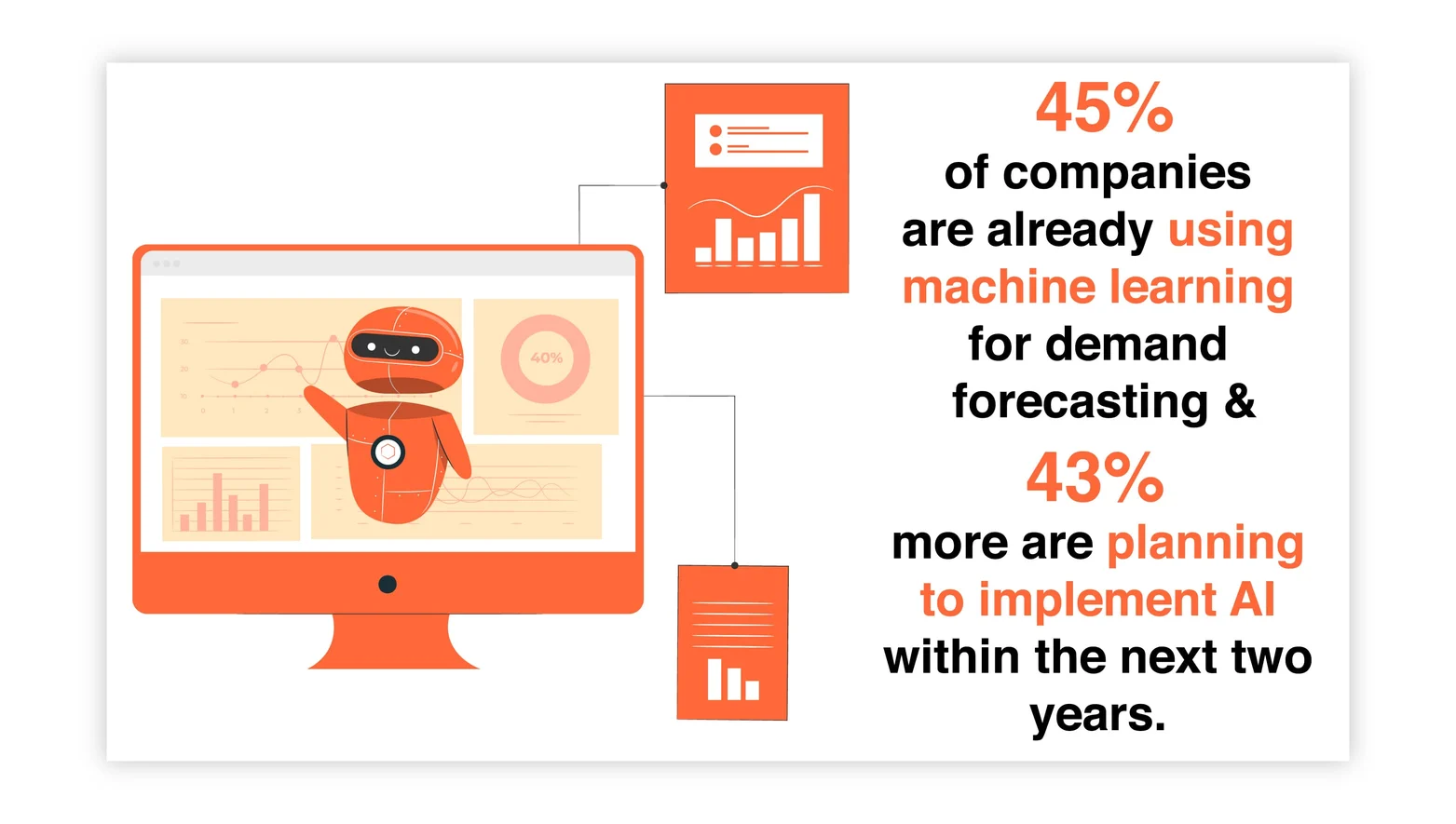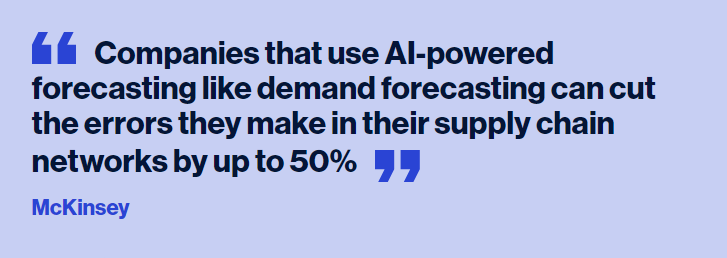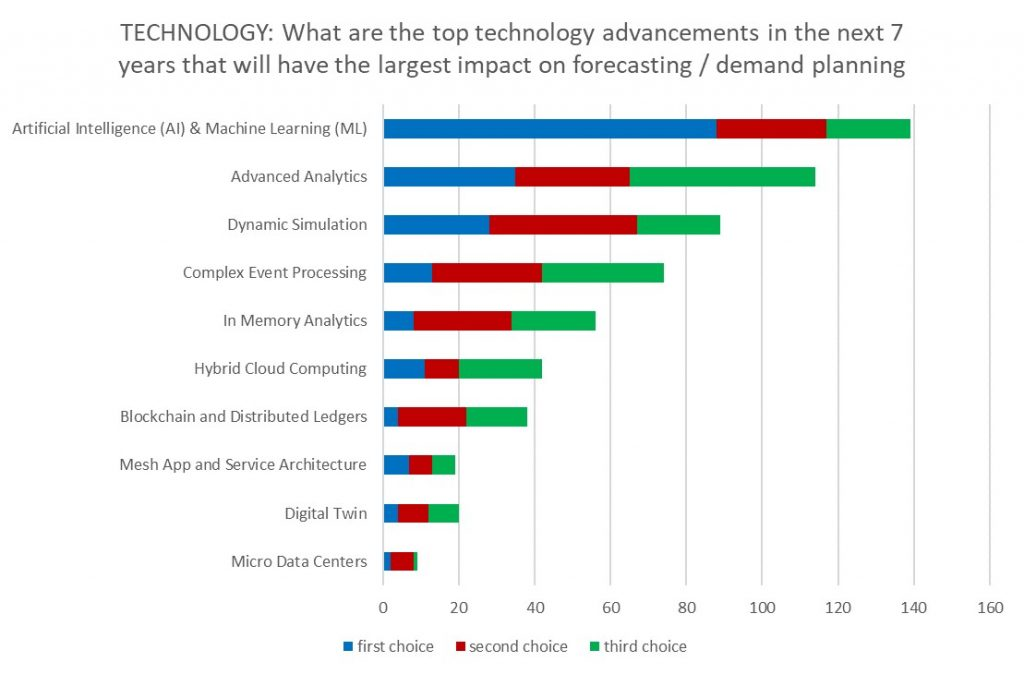
Sign up to receive latest insights & updates in technology, AI & data analytics, data science, & innovations from Polestar Analytics.
Editor's Note- Whether you're a seasoned professional in the field or someone keen on understanding the evolving landscape of demand forecasting, this blog aims to provide valuable insights and practical knowledge. Join us on this exploration as we decode the synergies of AI and ML, unraveling the potential they offer for achieving excellence in demand forecasting.
In the constantly changing business environment, organizations are continuously vying for pole position. With market fluctuations and an increasingly unpredictable consumer base, companies are often left grappling in the dark, trying to understand the next big trend. Demand forecasting surfaces as a strategic tool, acting as a guiding compass in navigating unexplored territories.
Essentially, it provides businesses with a foresight into the future—a predictive analysis enabling them to anticipate consumer trends well before they materialize in full. Such prescient insights are not just desirable; in our complex times, they are essential for those looking to stay competitive.

However, the traditional demand forecasting models, though valuable, often need to be expanded in scope and accuracy. This is where AI and Machine Learning, the vanguard of modern technology, step in. These tools go beyond merely enhancing forecasting; they undergo a fundamental transformation of the entire process. AI and ML, with their capability to process and analyze humongous amounts of data at unparalleled speeds, provide a level of forecasting precision previously unseen. They factor in many variables—seasonality, promotions, market activities, and even subtle shifts in consumer behaviour—that would be overwhelming for manual analysis.
It's evident in the findings of Gartner's survey. An impressive 45% of businesses have integrated machine learning into their demand forecasting processes, and this trend appears to be on the rise. The rationale behind this adoption is evident: improved accuracy, optimized supply chain dynamics, and decreased risks.
This blog leads you through the captivating convergence of technology, business, and human behaviour. We will delve deeper into the nuances, use cases, and influence of AI and ML-driven demand forecasting. Let's explore!
Anticipating market changes and planning accordingly has always been crucial for businesses, making demand forecasting a pivotal aspect of their operations. The recent leaps in ML and AI have only intensified its importance. The rise of impactful AI models such as GPT highlights the immense potential of artificial intelligence in revolutionizing conventional processes, with demand forecasting being a prime example. The distinct advantages of AI in demand forecasting revolve around three key pillars: dimensionality, scalability, and the feedback loop.

Dimensionality enhances prediction depth
In demand forecasting, traditional methods might need help to handle the high dimensionality of data, especially when dealing with numerous factors that can influence demand (e.g., seasonality, promotions, economic indicators). AI, particularly machine learning algorithms, excels at processing and extracting patterns from high-dimensional datasets. This enables AI systems to capture intricate relationships and dependencies among various factors, leading to more accurate demand predictions.
Scalability matches modern business requirements
Demand forecasting often involves large datasets, and the ability of AI systems to scale efficiently makes them well-suited for handling vast amounts of historical and real-time data. Scalability allows AI models to adapt to changing business environments, accommodate more diverse sources of information, and maintain predictive accuracy even as the volume of data grows. This is particularly important in industries with dynamic and evolving market conditions.
Feedback Loop for continuous improvement
AI in demand forecasting can establish a dynamic feedback loop. As predictions are made and new demand data becomes available, AI models can continuously learn and adjust their forecasts. This adaptability enables the system to respond to market conditions, consumer behaviour, and other influencing factors. The feedback loop enhances the accuracy of predictions over time, making AI-driven demand forecasting a more agile and responsive solution than static forecasting methods.
Machine learning is a significant component of the overall AI, and it's beneficial for getting into the nitty-gritty parts of a company's datasets. A significant obstacle lies in the fact that a considerable amount of this data is being squandered. Nearly 75% of all data collated by businesses isn't used. Machine learning can combine these unused historical datasets with real-time data to offer organizations an accurate snapshot of everything, from product demand to supply chain issues.

Let's use a simple grocery store as an example; during Christmas, the store decides to do what every other store on the planet does and runs a holiday promotion to boost sales. But how do they determine what items to discount? And how much should they cut off the price tag?
It's often a guess game and comes down to a human's intuition or gut feeling. For instance, a recent study found that almost 70% of grocers in North America need help to take in all of the aspects of a sale, such as products to promote and price points, when they decide to run a promotion.
Here's where the application of machine learning for demand forecasting can be beneficial. Using the store's historical datasets to forecast
Therefore, it's only a fraction of what machine learning could do to help the store prepare for its upcoming promotion.
Below is a table outlining challenges and considerations for implementing Artificial Intelligence (AI) and Machine Learning (ML) in demand forecasting, but the actual implementation may vary based on specific business contexts and requirements.
| Challenge/Consideration | Description |
|---|---|
| Data Quality | Challenge: Poor data quality can lead to inaccurate predictions. Incomplete or erroneous data can result in biased models and unreliable forecasts. Consideration: Implement data cleaning and validation processes to ensure high-quality input data. Regularly update and maintain datasets. |
| Model Complexity | Challenge: Overly complex models may lead to overfitting, especially with limited data. They might not generalize well to new patterns, impacting forecasting accuracy. Consideration: Strike a balance between model complexity and simplicity. Regularly validate models on new data to ensure generalization. |
| Forecasting Horizon | Challenge: Long-term forecasts are inherently more uncertain. Short-term predictions may be more accurate, but long-term forecasts can be challenging due to external factors and changing market conditions.
Consideration: Combine short-term and long-term forecasting models. Adjust forecasting methods based on the time horizon and the nature of the products/services. |
| Dynamic Market Conditions | Challenge: Rapid changes in market conditions, such as sudden demand spikes or economic downturns, can challenge the adaptability of forecasting models. Consideration: Develop models that can quickly adapt to changing conditions. Implement real-time data feeds and continuous learning to update models dynamically. |
| Seasonality and Trends | Challenge: Seasonal variations and trends can impact forecasting accuracy. Traditional models may struggle to capture complex patterns. Consideration: Utilize advanced time-series analysis techniques to identify and incorporate seasonality and trends into the forecasting models. |
| Data Privacy and Security | Challenge: Forecasting models often require sensitive business data. Ensuring the privacy and security of this data is crucial to comply with regulations and protect business interests. Consideration: Implement robust data encryption, access controls, and comply with data protection regulations. Consider using privacy-preserving techniques like federated learning when applicable. |
| Model Maintenance | Challenge: Models require regular updates to remain accurate over time. Failing to update models may lead to degradation in performance. Consideration: Establish a maintenance schedule for updating models based on changing data patterns and business conditions. Implement monitoring systems to identify performance degradation. |
| User Acceptance and Adoption | Challenge: Employees may be resistant to relying on AI/ML-based forecasts, especially if they don't understand or trust the technology. Consideration: Provide training and education to users on the benefits and limitations of AI/ML in demand forecasting. Foster a culture of trust in the technology through transparency and communication. |
Demand forecasting in the CPG industry is crucial for optimizing inventory levels, reducing stockouts, and improving customer satisfaction. AI and ML can analyze historical market trends, sales data, and external factors to predict future demand accurately.
Procter & Gamble (P&G), a multinational CPG company, uses machine learning algorithms to analyze point-of-sale data, social media trends, and weather patterns to forecast product demand. This helps P&G optimize production schedules and distribution channels.
In manufacturing, demand forecasting is essential for efficient production planning, resource allocation, and minimizing excess inventory. AI and ML algorithms can analyze data from the entire supply chain, including production rates, raw material availability, and market demand, to provide accurate forecasts.
A global manufacturing company, Siemens utilizes AI-powered demand forecasting to optimize its production processes. By analyzing data from various sources, including historical sales, market trends, and supplier performance, Siemens can adjust production schedules in real time to meet demand fluctuations.
ESG industries focus on sustainability and ethical practices. AI and ML can predict demand for eco-friendly products, assess the impact of sustainability initiatives, and optimize resource allocation for environmentally friendly practices.
Tesla, an electric car and clean energy conglomerate, leverages AI and ML to forecast the demand for electric cars. The company analyzes government policies, consumer preferences, and environmental considerations to adjust production plans. This allows Tesla to meet the growing demand for sustainable transportation solutions.
In all these cases, the key benefits of using AI and Machine learning for demand forecasting include improved accuracy, the ability to consider a wide range of variables, faster decision-making, and better alignment with market dynamics. These technologies empower organizations to make data-driven decisions and adapt quickly to changes in demand, ultimately enhancing operational efficiency and customer satisfaction.
The fusion of AI and ML with demand forecasting reshapes how businesses operate in an increasingly dynamic market environment. The ability to process vast amounts of data, recognize intricate patterns, and provide real-time insights empowers enterprises to make more informed decisions, ultimately enhancing their competitiveness and customer satisfaction.
As technology advances, the integration of AI and ML in demand forecasting is poised to become a cornerstone of strategic planning for businesses across diverse industries. Embracing these innovations with Polestar Analytics can help organizations succeed in the ever-evolving landscape of the global marketplace. Book a consultation today!
About Author

Content Architect
The goal is to turn data into information, and information into insights.